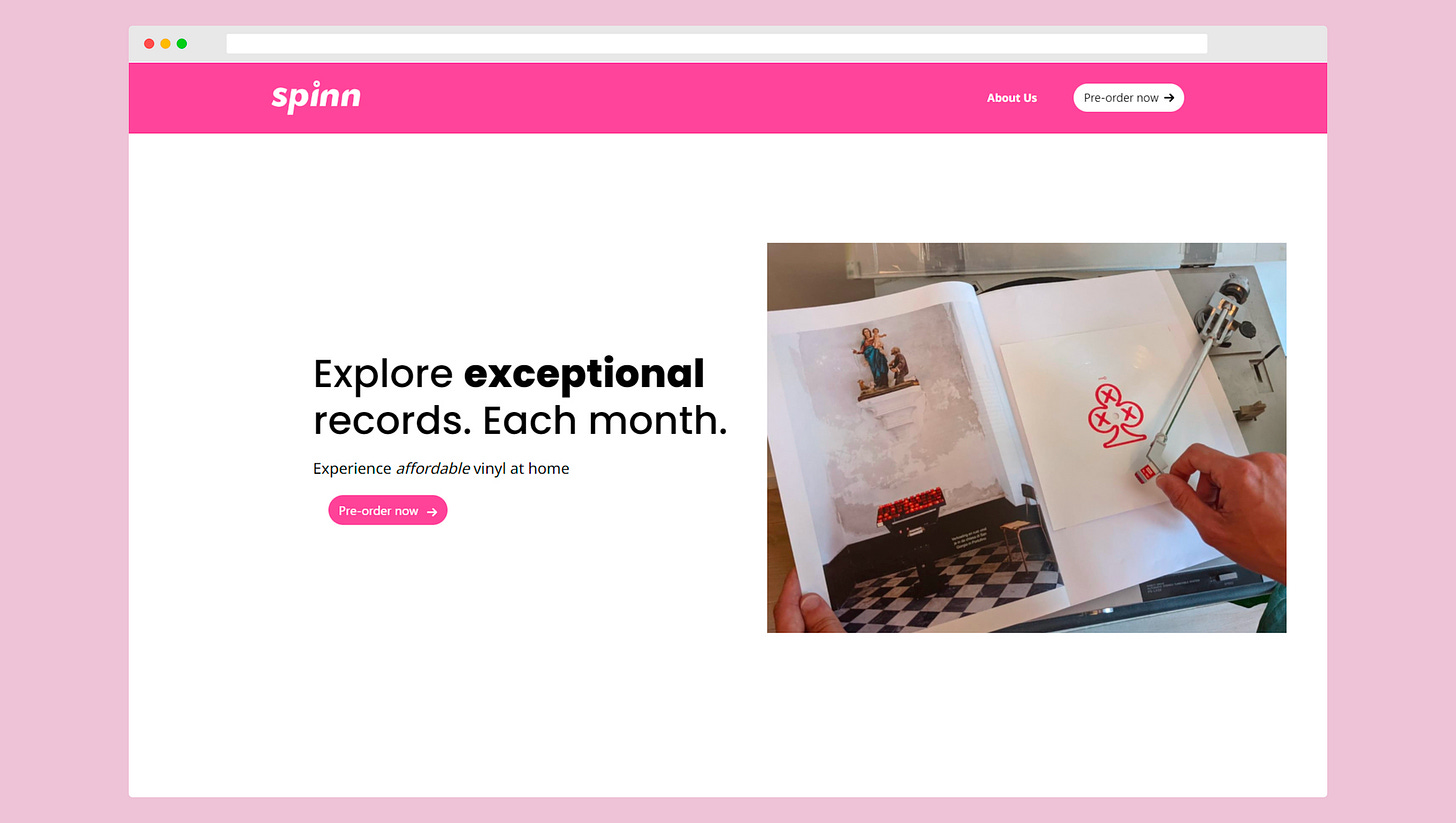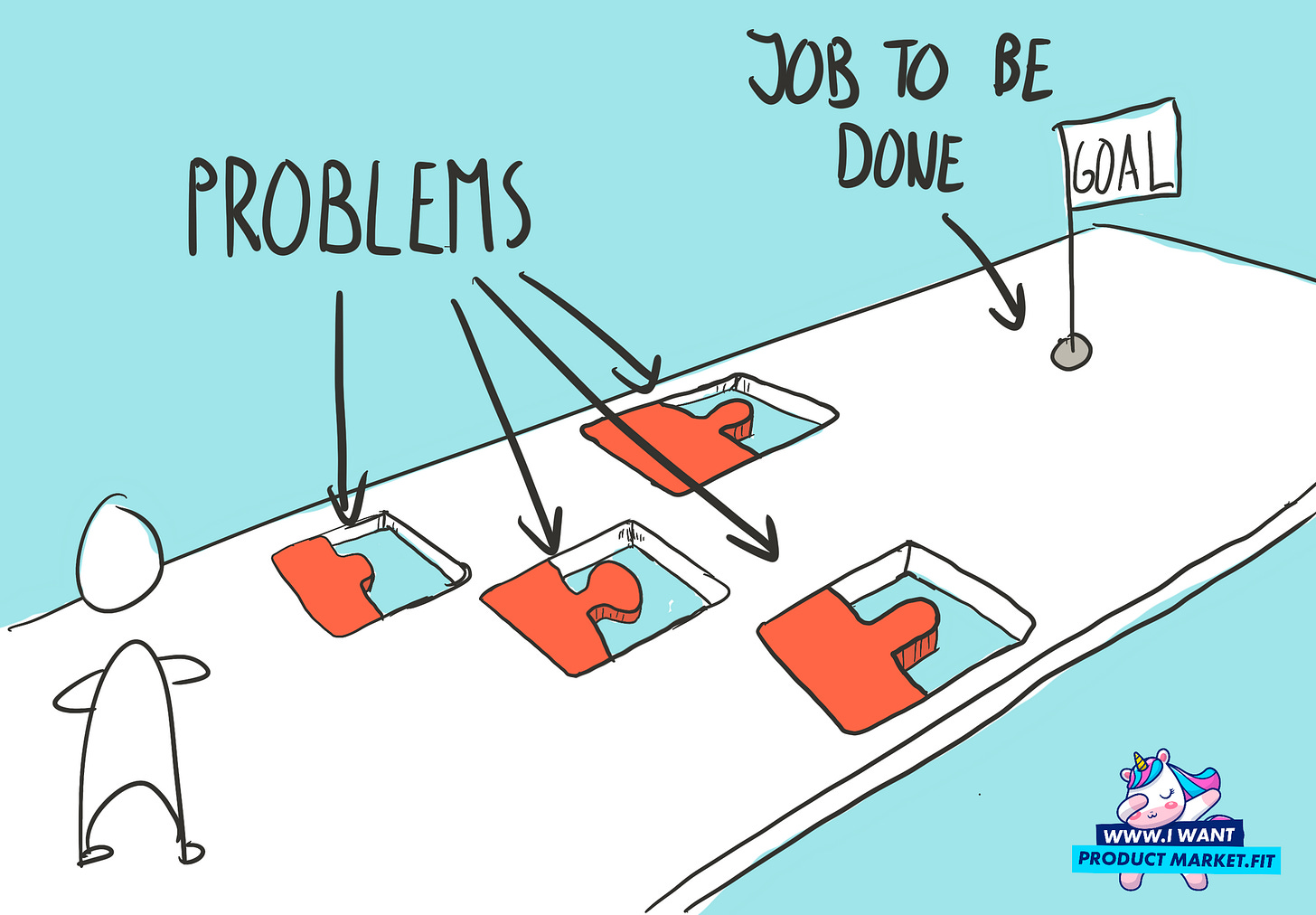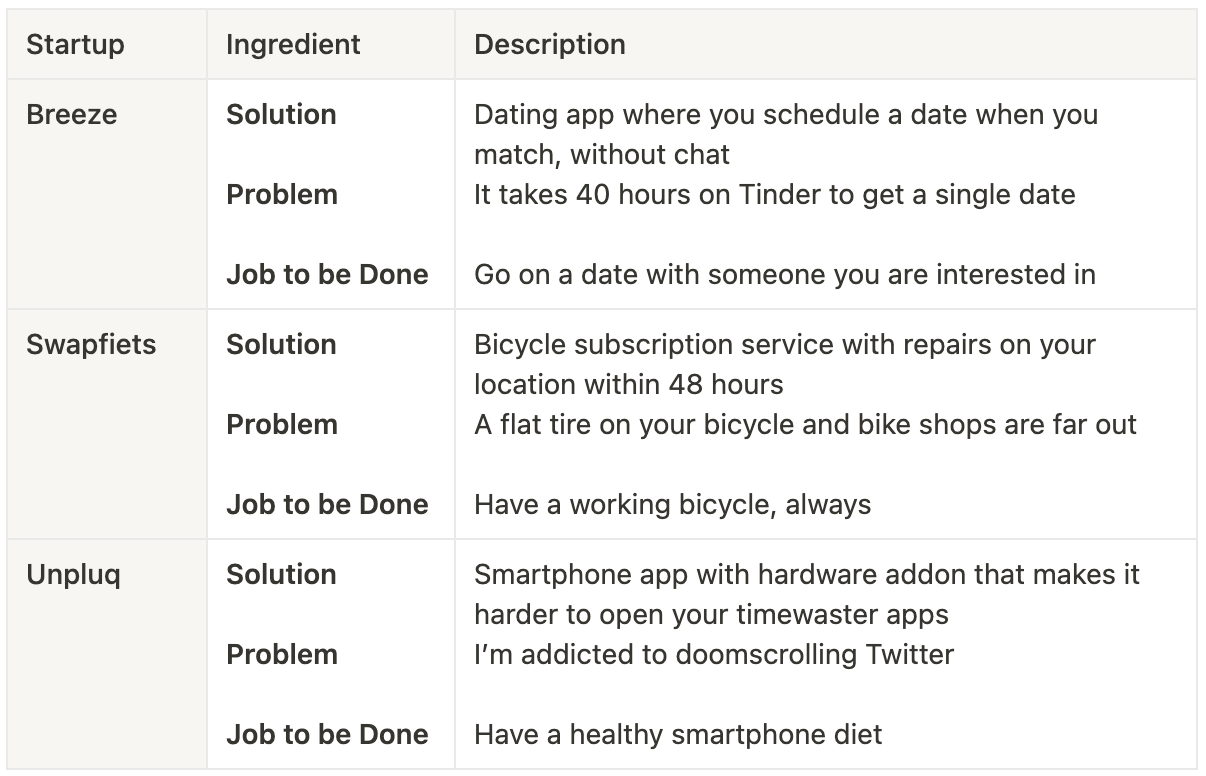When problems and jobs don’t mix
Problems are at the core of each startup. It shapes your solution that generates value. Without generating value, it’s hard to retain customers.
Table of Contents
Therefore we have books, articles, podcasts around the mantra: “Love the problem, not the solution”.
So what is love?

“The key to love is understanding” (Spotify). That’s why I write about understanding problems so often (1,2,3,4): to enable you to generate value for your customer.
However, when it comes to understanding, others argue that we should understand the customer’s job to be done. Not just somebody, bu t the father of disruptive innovation: Clayton Christensen.
So which one should we understand: the problem or the job to be done? The simple answer is ‘both’, the nuanced answer is ‘it depends’.
In this article, I will lay out the differences and overlaps between problems and jobs to be done. And, I will show you when which one is relevant. But first, we need an introductory anecdote.
Meet Spinn
A year ago, I mentored a startup of three music aficionados. They wanted to create a vinyl subscription service. You would receive new vinyl, monthly. Like Spotify’s discovery weekly, but for vinyl.
A bunch of mini-records would hit your doorstep, accompanied by a magazine containing articles on the music and musicians.
Why? They discovered that people find it hard to get outside of their own music bubble due to algorithms. Plus, vinyl is expensive.
How to tackle the expensive part? The three discovered a cheaper way to make vinyl: an existing technology called the flexidisc.
The flexidisc is a relic on which ‘99% Invisible’ could do an episode. Back in the old days, the flexidisc was often used as a way to promote music, it was an intentionally disposable disc.

Smaller than a regular record, cheap to produce, quality is a bit lower, and starting costs are a bit lower. A great compromise.
With this solution, they wanted to create a more accessible way to broaden your record collection and fight the algorithmic bubble.
They found a problem, a job to be done and a solution. In their 4th week, they launched a landing page to test desirability of the solution.

They got 9 preorders (€19,50 each) within 7 days with very limited marketing efforts. It was not a bad result for first-time founders with a startup this young.
Spinn was ahead of their cohort in terms of traction. Then, they were confronted with a tough decision as the team discovered roadblocks ahead.
Killing in the name of 🎵
Their subscription idea soon turned out to be much more expensive than expected and the legality of music rights was an issue. Next to this, they found there are many vinyl subscription services out there already.

Even though they were invested in the idea, they were left with no other choice than to kill the ‘discover weekly for vinyl’-idea.
Grooving on (💽)
The founders still really loved the idea of a magazine-vinyl hybrid. As one of the founders recalls, creating such a magazine was one of their dreams.
This gave inspiration to a new solution idea. They ditched the music discovery and moved into what I summarise as an immersive analogue music experience.

Spinn Magazine is a magazine about delving into fringe hip-hop, with 1 flexidisc mini-vinyl. It contains interviews with hip-hop artists, cool photography, backstories to albums and a special touch: backstories to the samples used in hip-hop. The flexidisc contains samples and fragments that relate to the articles in that edition.
The team pivoted to a new solution. The job to be done changed with the new solution. It was less about monthly discovery and more about being deep in the fringe.
But what about the problem? Does the fringe hip-hop magazine solve a problem? And if not, is that a problem? To answer that, we need some clear definitions.
Two sides of the same coin
What is a job to be done? What is a problem? Are they two sides of the same coin? Yes. Do I love rhetorical questions to build tension? Yes. Did I render these questions unrhetorical by answering them? Hell yes.
Problems and jobs to be done are ingredients in a situation of a customer. A situation in which the customer starts looking for solutions, maybe.

Problems are about now
Problems are the obstacles that stand in the way of the customer trying to achieve something desirable.
A problem summarises what is wrong with the current situation. It’s subjective, as what’s a problem for one person isn’t one for the other. Some examples:

Jobs to be done are about the future (📺)
Why do we need a job to be done when we got a problem? As you saw with the examples above, it’s because it helps us to understand in what direction a customer is trying to go.
“A job is shorthand for what an individual really seeks to accomplish in a given circumstance” – Christensen
Solving the problem isn’t always the goal. The job to be done is the goal.
You can talk about goals, jobs or needs. What all of these things have in common is that they are future-oriented.
Back to Spinn, back to reality 🎶
So, now we know the difference between jobs to be done and problems. Often it helps to understand both. But in some cases, it doesn’t.
For Spinn, the job to be done was updated to ‘Immerse yourself into the newest fringe hip-hop’.
The killed concept has a clear problem: music bubble and expensive vinyl. But for the new idea, is there an obstacle for the customer in this situation that stands in the way of this new job to be done?

The only person that could tell is the customer. The founders interviewed hip-hop lovers. Nobody talked about their fringe hip-hop experience as containing problems. People were just really excited and into hip-hop and always wanted more.
No problem? No problem!
Was this absence of a problem an issue? A customer not talking about a problem can mean the problem is latent, meaning the customer experiences the problem, but is unaware of its existence.
But sometimes it means something different. The customer not talking about the problem is because ‘problem’ is the wrong way to talk about the situation. Sometimes, problems don’t really exist in the experience of the customer even though they want to achieve something.
Think about fashion brands. They help people to express themselves, i.e. the job to be done. I don’t feel that people are buying shirts for their problem-solving capabilities.
Think about car brands and their unique styles. What is the problem the Volvo Brand solves? Sure, people buy cars for their problem-solving capabilities, but in an industry like the car industry, the job to be done a brand is hired for plays a big role in the buying process. You can’t ignore that.
What I see in workshops is that people try to forcefully create a problem for a job to be done that you found. You can do that, nobody is going to stop you.
You can coin: “the problem of not looking trendy”. Sure. But is that how we talk about clothing? For Spinn Magazine it would be “It’s hard to immerse yourself in fringe hip-hop”. Nobody said that.
In short, problems are less relevant for aspirational ‘solutions’, such as brand-heavy items, and very mature markets such as cars and fashion—solutions where utility is not the main diversifier.
The founders told me they never revisited their initial problem definition during the pivot. They were just too excited to get to that first magazine edition out. They never considered the magazine solving a problem.
In the end, they got to a prototype of a first edition but then needed to focus on their graduation. The project still floats in their minds, but currently it’s not being actively worked on. And that is for us the end of Spinn.
As long as you generate value
In the end, it’s simple:
- All solutions help to achieve a job to be done
- Most solutions solve a problem
Enabling your customer to solve a problem generates value for the customer. Enabling your customer to complete a job generates value for the customer.

Sometimes, it’s the latter, sometimes it’s both. This is about understanding what’s the most relevant way to look at what your customer is doing.









